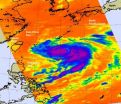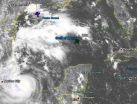(Press-News.org) Global efforts to tackle millions of preventable child and maternal deaths will fail to extend gains unless world leaders act now to pour more healthcare resources directly into families and communities, according to a new World Vision report launched today.
"The Missing Link: Saving children's lives through family care" examines how the resources invested to achieve Millennium Development Goals (MDGs) 4 and 5 can go further toward saving the more than 8 million children under the age of five and 350,000 mothers who die each year, mostly from preventable causes. Undertaken by the international child-focused organization World Vision, the analysis distills several decades of field-based experience and research to recommend investing directly in care for families and the communities where they live.
"With only five years to go until the MDG target deadline, no one can afford to waste time or resources," said Kevin Jenkins, president and CEO of World Vision International. "Efforts will falter for the world's most impoverished, vulnerable children and their mothers until we focus our energies on bringing health care directly where they need it most—right to their homes and communities."
In 2000, world leaders adopted eight ambitious yet achievable goals aimed at halving extreme poverty and its effects. Known as the MDGs, their target deadline is 2015. Next week, world leaders, governments and NGOs convening for the 2010 UN General Assembly in New York will highlight progress, examine gaps and lessons learned and revitalize efforts on the MDGs, with Secretary General Ban Ki-Moon putting a special focus on women's and children's health.
MDGs 4 and 5, targeting the reduction of maternal and child mortality, lag far behind the other goals. This is in part because the people who most need care can't access it, say the authors of the World Vision report.
"Millions of children live and die beyond the reach of formal health services and clinics, of diseases that are easily prevented and treated when families are able to access effective, basic interventions as close to their homes as possible," said Martha Newsome, Global Director of Health and Nutrition for World Vision International. "This deadly gap makes family and community care a critical link in saving millions from preventable deaths, and an essential component required to strengthen health systems adequately."
World Vision's Child Health Now campaign, drawing upon lessons learned from the Christian humanitarian organization's 1,600+ community programs, encourages communities to express their rights to quality health care, and press local and national governments to meet their responsibilities for promoting health and ending preventable child deaths.
Although the number of deaths among children under the age of five has declined in recent years, the rate of decline—an estimated one-third reduction over 20 years—is insufficient to meet MDG 4, particularly in the regions of Sub-Saharan Africa, Southern Asia and Oceania, where most child deaths occur, according to estimates released today by UNICEF.
The results are dismal given that evidence shows millions of babies and toddlers could be saved from death each year through a small number of proven, cost-effective interventions such as skilled birth attendants, immunizations, mosquito nets and oral rehydration therapy.
"We know what works, why it works and how to do it," says Jenkins. "What we need to do now is to mobilize the necessary political will to put mothers, children, their families and communities front and centre of global development."
"Otherwise, too many children born today into poor, under-served communities won't survive the five years to the 2015 deadline, simply because they and their families don't have access to basic health services," said Jenkins.
###
NOTE TO EDITORS:
A PDF of the report and multimedia resources (PSA on malnutrition, VNR and b-roll) are available at www.childhealthnow.org/unga-mediakit
About World Vision: World Vision is a Christian relief, development and advocacy organization dedicated to working with children, families and communities worldwide to overcome poverty and injustice. World Vision serves all people regardless of religion, race, ethnicity or gender.
About Child Health Now: For more about World Vision's campaign, see www.childhealthnow.org
END
Infrared satellite data from NASA's Aqua satellite revealed strong convection and a tight circulation center within Typhoon Fanapi as it heads for a landfall in Taiwan this weekend.
At 1500 UTC (10 a.m. EDT) on Sept. 17, Typhoon Fanapi's maximum sustained winds were near 85 knots (97 mph). It was centered about 360 nautical miles east-southeast of Taipei, Taiwan near 23.2 North and 127.4 East. It is churning up high seas up to 22 feet.
NASA's Aqua satellite passed over Typhoon Fanapi on September 17 at 04:45 UTC (12:45 a.m. EDT) and captured an infrared image of its ...
We run our modern lives largely by the clock, from the alarms that startle us out of our slumbers and herald each new workday to the watches and clocks that remind us when it's time for meals, after-school pick-up and the like.
In addition to those ubiquitous timekeepers, though, we have internal "clocks" that are part of our biological machinery and which help set our circadian rhythms, regulating everything from our sleep-wake cycles to our appetites and hormone levels. Light coming into our brains via our eyes set those clocks, though no one is sure exactly how this ...
NASA's CloudSat satellite captured a profile of Hurricane Karl as it began making landfall in Mexico today. The satellite data revealed very high, icy cloud tops in Karl's powerful thunderstorms, and moderate to heavy rainfall from the storm. Meanwhile, NASA's "GRIP" mission was also underway as aircraft were gathering valuable data about Hurricane Karl as he moves inland.
NASA's Genesis and Rapid Intensification Processes mission (known as GRIP) is still underway and is studying the rapid intensification of storms, and that's exactly what Karl did on Thursday Sept. ...
Julia is waning in the eastern Atlantic Ocean because of outflow from massive Hurricane Igor, despite his distance far to the west. Satellite imagery from NASA's Aqua satellite showed that Julia's eye was no longer visible, a sign that she's weakening.
As NASA's Aqua satellite flew over Hurricane Julia from space on Sept. 16 at 1:35 p.m. EDT, the Moderate Resolution Imaging Spectroradiometer (MODIS) instrument captured a visible image of the storm. In the MODIS image, Julia's eye was no longer visible and its center was cloud-filled.
Although Julia is weakening from ...
Spoilage bacteria that can cause red coloration of pickles' skin during fermentation may actually help clean up dyes in textile industry wastewater, according to a U.S. Department of Agriculture (USDA) study.
Some species of Lactobacilli-food-related microorganisms-can cause red coloring when combined with tartrazine, a yellow food-coloring agent used in the manufacture of dill pickles. Now Agricultural Research Service (ARS) microbiologist Ilenys Pérez-Díaz and her colleagues have found that these spoilage Lactobacilli also may have environmental benefits. ARS is ...
Deleting a certain gene in mice can make them smarter by unlocking a mysterious region of the brain considered to be relatively inflexible, scientists at Emory University School of Medicine have found.
Mice with a disabled RGS14 gene are able to remember objects they'd explored and learn to navigate mazes better than regular mice, suggesting that RGS14's presence limits some forms of learning and memory.
The results were published online this week in the Early Edition of the Proceedings of the National Academy of Sciences.
Since RGS14 appears to hold mice back mentally, ...
Solar energy could be a central alternative to petroleum-based energy production. However, current solar-cell technology often does not produce the same energy yield and is more expensive to mass-produce. In addition, information on the total effect of solar energy production on the environment is incomplete, experts say.
To better understand the energy and environmental benefits and detriments of solar power, a research team from Rochester Institute of Technology has conducted one of the first life-cycle assessments of organic solar cells. The study found that the embodied ...
Traumatic brain injury (TBI) is a serious public health problem in the United States. Recent data show that approximately 1.7 million people sustain a traumatic brain injury annually. While the majority of TBIs are concussions or other mild forms, traumatic brain injuries contribute to a substantial number of deaths and cases of permanent disability.
Currently, there are no drugs available to treat TBI: a variety of single drugs have failed clinical trials, suggesting a possible role for drug combinations. Testing this hypothesis in an animal model, researchers at SUNY ...
Salt Lake City, September 17, 2010—Colon cancer is the second most common cancer in the United States and causes more than 50,000 deaths each year. It has been known for some time that mutations in the APC gene occur in more than 85 percent of all sporadic colon cancers. Now researchers at Huntsman Cancer Institute at the University of Utah demonstrate in a study featured today in Cell the mechanism by which mutation of the APC gene affects a cellular process known as DNA methylation. DNA methylation is a chemical modification made to DNA that plays an important role in ...
ANN ARBOR, Mich.---How could climate change and our response to it affect the Great Lakes' water quality? That's the primary question a team of 27 researchers from across the University of Michigan and collaborators at other institutions will answer with a new $5-million grant from the National Science Foundation.
The researchers will focus on extreme weather events caused by climate change.
The Great Lakes hold 84 percent of North America's surface fresh water, and their basin is home to 10 percent of the U.S. population.
"The suspicion is that climate change will ...



